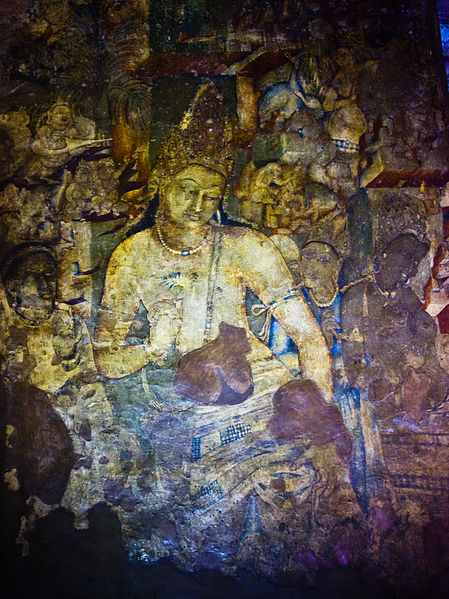In Buddhist belief, there is no other god that is as revered and honored as much as Buddha himself. When you hear of a Buddhist, Buddha is the first and by far the most recognized god, not only in the religion itself but also worldwide by non-Buddhist people. After all, Buddha is the main deity the Buddhist people worship. But one may not realize that Buddha is not the only God that the Buddhist people worship.
Perhaps the second most important god in this polytheistic belief system is Chenrezig. Have you ever heard of him? If you don’t study other religions likely you have not. Who is he? Why is he important to Buddhist beliefs? And what bearing does he have on the other Gods in Buddhism?
Self-born eternal Buddha
In Tibetan Buddhist belief, Chenrezig, also known as Avalokiteshvara in ancient Indian Sanskrit, is the earthly manifestation of the self-born eternal Buddha, Amitabha. This Buddha is also known as the eternal Buddha. They call him this because they consider him to be forever existing and immortal, and has become awakened, countless, immeasurable and inconceivable.
 His purpose was to guard this world in the interval between the historical Sakyamuni Buddha, and the next Buddha of the future Maitreya. According to legend, Chenrezig made a vow that he would not rest until he had freed all the beings in every realm from the pangs of suffering. He worked diligently at his self-imposed task for a very long time, yet when he looked at all there was left to be done he became discouraged, and as a result, his head split into thousands of pieces. Amitabha put those pieces back together, but instead of putting them the way they were he gave Chenrezig many arms and heads. This enabled Chenrezig to work with a myriad (thousand or more) of beings at the same time. This is why Chenrezig is sometimes pictured with eleven heads and a thousand fanned out arms.
His purpose was to guard this world in the interval between the historical Sakyamuni Buddha, and the next Buddha of the future Maitreya. According to legend, Chenrezig made a vow that he would not rest until he had freed all the beings in every realm from the pangs of suffering. He worked diligently at his self-imposed task for a very long time, yet when he looked at all there was left to be done he became discouraged, and as a result, his head split into thousands of pieces. Amitabha put those pieces back together, but instead of putting them the way they were he gave Chenrezig many arms and heads. This enabled Chenrezig to work with a myriad (thousand or more) of beings at the same time. This is why Chenrezig is sometimes pictured with eleven heads and a thousand fanned out arms.
Buddhist Tradition Takes to Compassion
In his book The Reason We Practice Meditation, Thrangu Rinpoche states the approach that the Buddhist tradition takes to compassion is a little bit different, because it’s founded on the recognition that, whether or not you can benefit from that being or that person in their immediate situation and circumstances, you can generate the basis for their ultimate benefit. And the confidence in that removes the frustration or the misery which otherwise somehow afflicts ordinary compassion. So, when compassion is cultivated in that way, it is experienced as delightful rather than miserable. This approach is heavily influenced by Chenrezig.
Chenrezig Considered as the Patron Bodhisattva of Tibet.
A Bodhisattva is a person who has attained Prajna, or Enlightenment, but instead of attaining Nirvana, holds off in order to help others attain Enlightenment. His meditation is practiced in every great lineage of Tibetan Buddhism. In fact, the king Songtsen Gamp was believed to be an emanation of Chenrezig, as were some of the most respected meditation masters. These would include Dalai Lamas and Karmapas who are themselves considered living Buddhas.
It is believed that whenever one is compassionate or feels love for anyone or anything, including plants and animals, one experiences a taste of their own connection to Chenrezig. Tibetan Buddhists believe that, even though most are not as consistently compassionate as some of the great meditation masters, people still share, in their basic nature, unconditional compassion and wisdom. And to them, that is no different from what is seen in Chenrezig and in these Lamas. So ingrained in Buddhist belief is Chenrezig, he is renowned as the embodiment of the compassion of all the Buddha’s.





